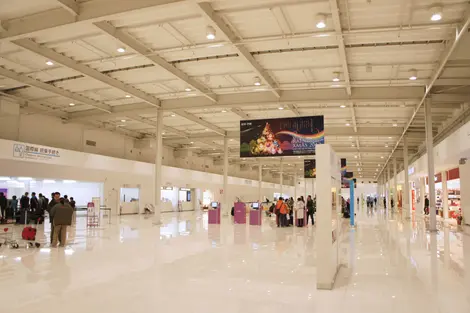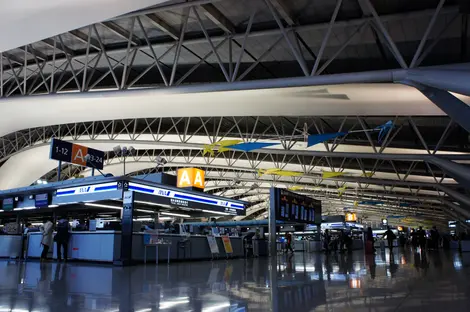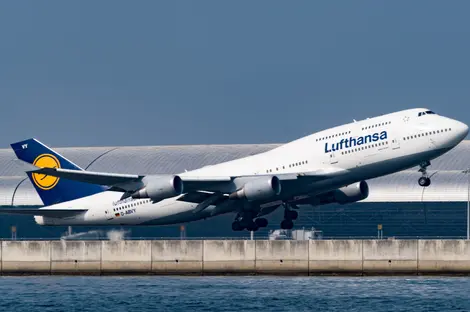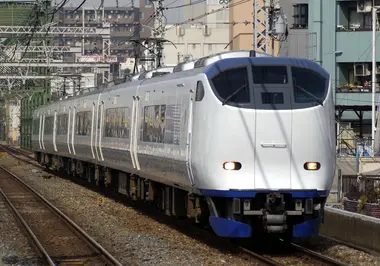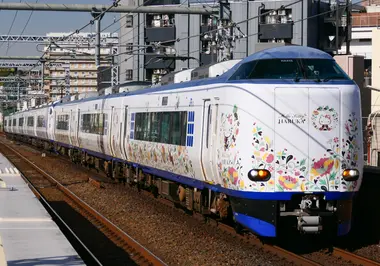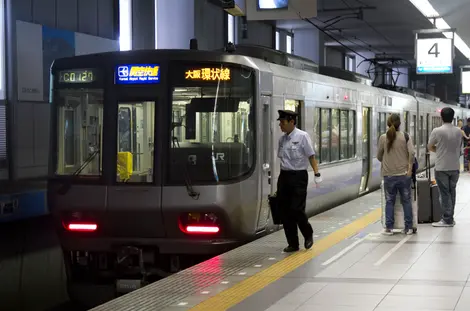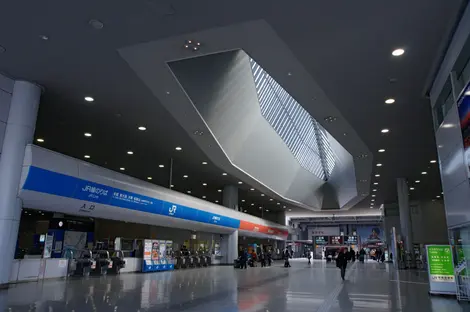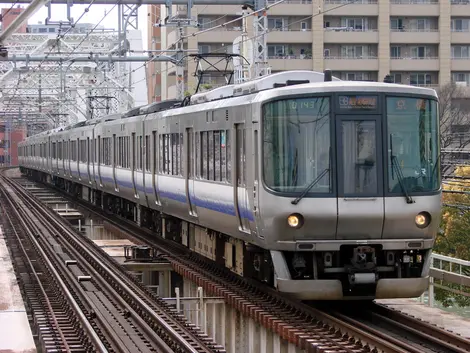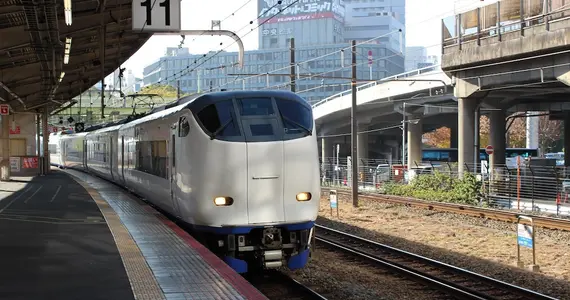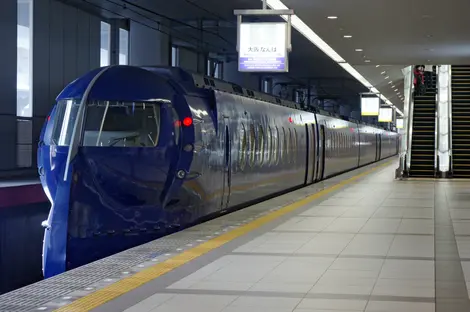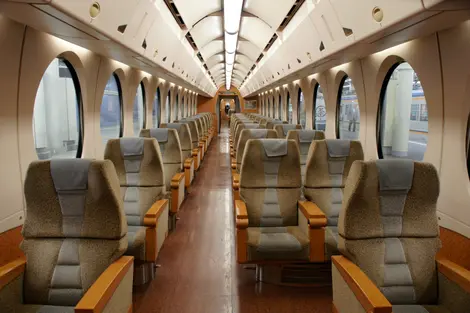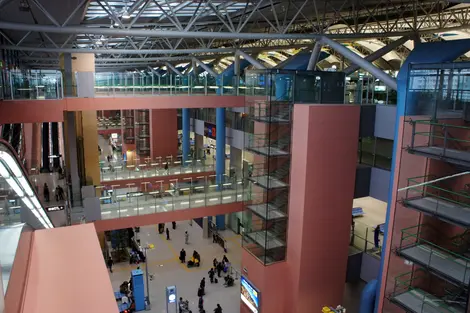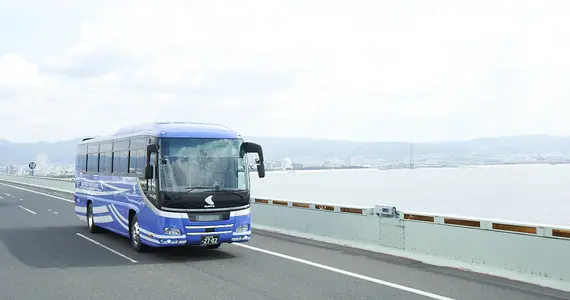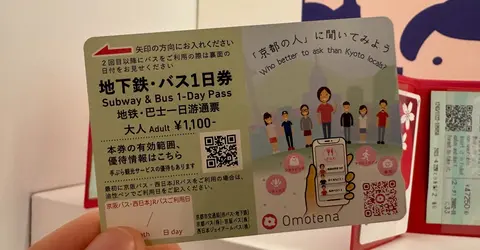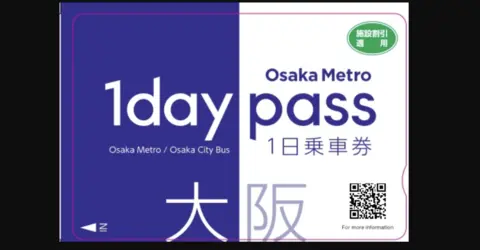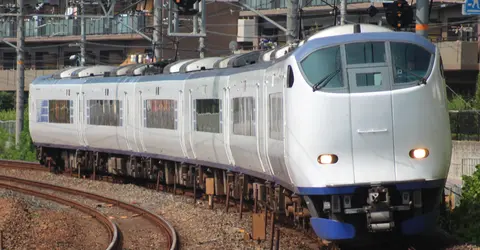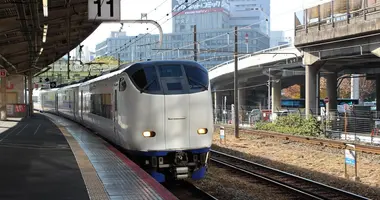Kansai International Airport (KIX)
- Published on : 28/02/2020
- by : S.V.
- Youtube
The handy guide to the airport near Osaka and Kyoto
Located on an artificial island in Osaka Bay, Kansai International Airport (関西国際空港) is a technical and architectural feat that serves as a major gateway to western Japan. The archipelago's third-busiest airport, with 31.9 million passengers in 2019, it mainly serves the tourist cities of Kyoto, Osaka and Kobe. Its exceptional construction on the sea and its innovative architecture make it one of the world's most outstanding airports, although it faces significant challenges due to its unique location.
Kansai airport overview
Kansai International Airport (KIX) is Japan's third-busiest airport, after Tokyo Haneda and Tokyo Narita. Located 40 km southwest of downtown Osaka and around 75 km from Kyoto, the airport has become a veritable giant of Japanese air transport.
Built on an entirely man-made island, KIX is the main hub for low-cost flights in the region, which partly explains its strong growth in recent years. Since April 2016, the airport has been managed by a consortium made up of Vinci Airports (40%), Japanese company Orix (40%) and local companies (20%), under a concession that runs until 2060.
The airport has two terminals: Terminal 1, which serves both domestic and international flights, and Terminal 2, inaugurated in 2012 and mainly dedicated to low-cost airlines. By 2023, these airlines will account for 44% of the airport's international flights.
History and construction of a technical feat
In the 1960s, the Kansai region was experiencing slower economic expansion than Tokyo. To stimulate the local economy, it was decided to build a new airport. The old Osaka-Itami International Airport, located in a dense urban area, could not be expanded and was generating considerable noise pollution for local residents.
Following the protests that had accompanied the construction of Narita airport, the Japanese authorities opted for an unprecedented solution: to build Japan's first airport on the sea. The chosen site was 5 km off the coast of Senshu in Osaka Bay, 35 km from the city center. This location enabled 24-hour operation, impossible for an urban airport.
Work began in 1987 with the creation of a 4 km² artificial island using the umetate-chi (landfill) technique. Construction was particularly complex, given the seismic risks and frequent typhoons in the region. The site mobilized 10,000 men and 80 ships over three years to build a 30-metre-thick layer of fill, protected by dikes reinforced with 8,000 tetrapods.
To link the island to the mainland, a 3.7 km truss bridge was built, at a cost of one billion dollars. In the meantime, the island had settled by 8 meters, far more than expected, making the project the most expensive construction work in history at the time.
Terminal 1, designed by Italian architect Renzo Piano, is a spectacular achievement with its asymmetrical roof in the shape of an aircraft wing. Measuring 1.7 km in length, it is the longest terminal in the world. To compensate for the continuous settling of the island, the building was constructed on adjustable piles that could be raised.
The airport opened on September 4, 1994. In 2007, a second artificial island was built to accommodate a second runway, considerably increasing the airport's capacity.
Getting to and from the airport
Kansai International Airport offers a wide range of transport options to reach the main cities in the Kansai region. Here are the main means of transport to and from the airport:
To/from Osaka
To Shin-Osaka :
- Haruka Limited Express Train: about 50 minutes, ¥2,710 with reserved seat or ¥2,380 without reservation
- Bus: approx. 80 minutes, ¥1600
- Cab: approx. 50 minutes, approx. ¥17900
To Osaka (center) :
- JR Kansai Airport Rapid Service train: approx. 70 minutes, ¥1210
- Bus: approx. 50 minutes, ¥1,600
- Cab: approx. 40 minutes, approx. ¥20280
To Namba :
- Nankai Airport Express train: about 45 minutes, ¥930
- Nankai Limited Express Rapit train: about 38 minutes, ¥1450 or ¥1660 in "super-seat"
- Bus: approx. 50 minutes, ¥1100
- Cab: approx. 50 minutes, approx. ¥20280
To/from Kyoto
Options for Kyoto :
- Haruka Limited Express Train: approx. 75 minutes, ¥3230 with reserved seat or ¥2900 without reservation
- Bus: approx. 120 minutes, ¥2600
- Reserve your seat on a Yasaka shuttle bus to Kyoto! bus: approx. 90-120 minutes, ¥4200
- Cab: approx. 120 minutes, approx. ¥35280
To/from Kobe
Options for Kobe :
- Limousine bus to central Kobe: approx. 65 minutes, ¥2,000
- High-speed ferry to Kobe airport: 30-minute crossing (plus 10-minute shuttle from terminal), ¥1880 (special rate of ¥500 for foreign visitors on presentation of passport)
Take your ticket with Haruka for easy airport access!
Terminals and facilities: organization and services
Kansai International Airport offers a wide range of services to facilitate travelers' stay:
Practical information
- Tourist information: counters staffed by English-speaking staff are available in both terminals, offering maps and brochures on the region. Terminal 1: open daily from 7am to 10pm. Terminal 2: open daily from 11:30 a.m. to 7:30 p.m.
- Currency exchange: 16 currency exchange points in Terminal 1 (levels 1F, 2F, 4F and international zone) and 3 in Terminal 2. There are also 13 vending machines in Terminal 1 and 4 in Terminal 2.
- Luggage lockers: manual lockers (¥640 per suitcase/day) and automatic lockers (¥400-800 per day, depending on size) are available in both terminals.
- Luggage delivery service: counters in Terminal 1 deliver your luggage directly to your accommodation (¥1,500-3,000).
- Wifi: free in all terminals.
- Wheelchair and stroller loans: available from information desks.
Main facilities
- Station: served by JR and Nankai lines, accessible on foot from Terminal 1 and by shuttle bus from Terminal 2. A JR ticket office allows you to activate your Japan Rail Pass.
- Sky View Observation Hall: an observation platform offering a panoramic view of the runways, accessible by shuttle from Terminal 1.
- Stores and restaurants: the airport boasts 101 stores offering duty-free products, souvenirs and more. Among the most notable are the Pokémon Store on level 2F of Terminal 1 and the gachapon area. 60 restaurants and cafés are also available.
Terminal 1 has been undergoing major renovation work since June 2021, completed in December 2023. These works haveincreased the airport's capacity from 23 to 40 million passengers a year, in preparation for the Osaka World Expo scheduled for 2025.
Airlines and destinations served
Kansai International Airport is a major hub for many Japanese and international airlines. Twenty-five years after its opening, KIX welcomes 86 airlines to its two terminals and serves 101 destinations worldwide.
The main airlines using KIX as a hub include :
- Japan Airlines (JAL)
- All Nippon Airways (ANA)
- Nippon Cargo Airlines
- Peach Aviation (low-cost airline based at KIX)
In terms of international destinations, the airport offers flights to major Asian cities (Seoul, Shanghai, Hong Kong, Bangkok, Singapore, etc.), as well as to Europe (Paris, London, Helsinki, etc.), North America (Los Angeles, San Francisco, Honolulu, etc.) and Oceania (Sydney).
For domestic flights, KIX serves virtually all major Japanese cities, including Tokyo (Haneda and Narita), Sapporo, Fukuoka, Okinawa and many others. These routes are operated by a variety of airlines, including low-cost carriers such as Peach, Jetstar Japan and Spring Japan.
Air France operates up to 4 direct flights a week from Paris Charles de Gaulle, with morning arrival on D+1. European airlines such as Lufthansa, Finnair, British Airways and Turkish Airlines also offer direct flights from their respective hubs.
In 2023, whereas Japanese accounted for 78% of international passengers in 1995, they now account for just 21%, testifying to theairport's growing appeal to foreign tourists. In the same year, 25% of all foreign visitors to Japan passed through Kansai International Airport.
Airport statistics and passenger numbers
Kansai International Airport has seen strong growth in passenger numbers over the years, despite some fluctuations linked to global events such as the COVID-19 pandemic.
In 2019, before the pandemic, KIX welcomed 31.9 million passengers, a figure that had been rising steadily for several years. This growth was encouraged by the increasing number of tourists visiting the archipelago, the major renovation work carried out in 2016 and 2017, and the expansion of the long-haul and low-cost flight offer.
The breakdown of passengers in 2019 was as follows:
- International flights: around 22 million passengers
- Domestic flights: approx. 9.9 million passengers
Like all airports worldwide, KIX was hit hard by the COVID-19 pandemic in 2020, with a staggering 95% drop in traffic in March 2020 compared with the previous year. Recovery has been slow but gradual.
In fiscal year 2023, 25.89 million passengers passed through the airport, demonstrating a significant recovery in traffic. In July 2024, 1.67 million foreign passengers used KIX, confirming this positive trend.
In terms of cargo, the airport handles around 670,000 tonnes of goods a year, making it a major logistics hub for Japan and East Asia.
The airport's total construction cost is around $15 billion, with a 40% budget overrun mainly due to settlement problems during construction of the artificial island. By 2015, the airport's debt had risen to over 1,000 billion yen, prompting its privatization in 2016.
Make your transfer to Osaka easy!
Discover our recommendations for getting around Kansai!
Discover Kansai with our excursion!
Challenges and future developments at the airport
Despite its success, Kansai International Airport faces several major challenges linked to its unique geographical location and structure:
The subsidence challenge
The biggest problem is the progressive subsidence of the artificial island. Initially, engineers predicted that the island would sink by 15 meters in 50 years before stabilization, but by 2018, the island had already sunk by 13 meters. Measures have been taken to slow this phenomenon, reducing subsidence from 50 cm to around 6 cm per year.
To counter this problem, Vinci added jacks under the artificial island to compensate for the annual subsidence. A maintenance plan provides for their adjustment every three years.
Vulnerability to natural disasters
The airport is also exposed to typhoons and earthquakes, which are common in the region. While the infrastructure withstood the Kobe earthquake in 1995 and a typhoon with winds of over 200 km/h in 1998, it was severely affected by typhoon Jebi in September 2018.
This particularly violent typhoon caused the flooding of one of the two runways and the basements of Terminal 1, with water heights reaching 90 cm in places. A wind-driven tanker crashed onto the bridge linking the airport to the mainland, keeping 8,000 people in the terminals overnight.
Following this event, major works were undertaken, notably to raise one of the runways and reinforce the surrounding dykes. These preventive measures are estimated to have cost $668 million.
Future developments
Despite these challenges, the airport continues its development with several major projects:
- The complete renovation of Terminal 1, completed in December 2023, which increased the airport's capacity from 23 to 40 million passengers a year.
- The development of innovative technologies such as a robotized system for COVID-19 screening and the application of an antimicrobial coating to frequently touched surfaces.
- Environmental initiatives including the electrification of airport vehicles, on-site solar power generation (Japan's largest airport solar capacity) and the creation of seagrass beds as natural carbon sinks.
- Plans to launch Japan's first large-scale commercial production of sustainable aviation fuel (SAF), directly on site.
- A partnership with Airbus to explore the integration of hydrogen-powered aircraft, making KIX the first Japanese airport to consider this technology.
These developments are aimed at preparing the airport for theOsaka World Expo in 2025, which is expected to attract around 28 million visitors over six months.
For further information, please contact the airport on +81 72 455 2500 or visit their website: http: //www.kansai-airport.or.jp/en/index.asp.
If you're planning to visit Osaka and the surrounding region, don't hesitate to discover What souvenirs to bring back from Kyoto? to prepare your shopping before getting back on the plane.
Choose how you want to get to Kansai Airport!
Address, timetable & access
Address
Phone
+81 72 455 2500Website
http://www.kansai-airport.or.jp/en/index.asp











